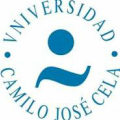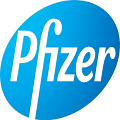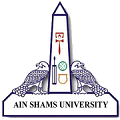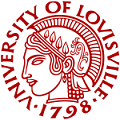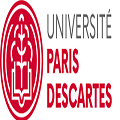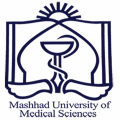Day 2 :
- Track 10: Personalized Drug Therapy Track 11: Pharmacogenomics: Convergence of Pharmacology & Genomics Track 12: Genomics & Personalized Medicine Track 13: Genetics of Ebola Outbreak Track 14: Approaches to Stem Cells Track 15: Nanotechnology: Future of Personalised Medicine
Session Introduction
Ramón Cacabelos
Camilo José Cela University, Madrid, Spain.
Title: Pharmacogenetics of cerebrovascular and cardiovascular risk factors in dementia

Biography:
Dr. Ramón Cacabelos is Professor and Chairman of Genomic Medicine at Camilo José Cela University, Madrid, and President of the EuroEspes Biomedical Research Center, Institute of Medical Science and Genomic Medicine, Corunna, Spain. He received his M.D. from Oviedo University, Ph.D. from Santiago de Compostela University, and D.M.Sci. (Psychiatry) from Osaka University Medical School, Japan. After a decade at the Department of Psychiatry in Osaka, he returned to Spain and focused his research activity on the genomics and pharmacogenomics of Alzheimer’s disease, neurodegenerative disorders, and neuropsychiatric pathology. He has published over 600 papers, 400 chapters, and 24 books. One of his major contributions is the first World Guide for Drug Use and Pharmacogenomics (2012)(www.pharmacogenomicsguide.com). He is Editor-in-Chief and member of the Editorial Board of several international journals, member of over 30 scientific societies, and President of the Spanish Society of Genomic Medicine and the World Association of Genomic Medicine.
Abstract:
"Alzheimer’s disease (AD) is a heterogeneous disorder with, at least, a tetravalent phenotype (neuropathological, neurobehavioral, age-related and gender-related components). Consequently, therapeutic intervention in dementia is polymodal, in order to modify the expression of all these complex phenotypes. AD patients present concomitant disorders including hypertension (20-30%), obesity (>20%), diabetes (24%), dyslipidemia (>40%), and metabolic disorders (>15%). Cardiovascular disorders (>40%), atherosclerosis (>60%), and different modalities of cerebrovascular damage (>60%) are frequent among patients with AD. Most of these concomitant anomalies may contribute to accelerate the dementia process. Pharmacogenetic studies in hypercholesterolemic patients with dementia treated with Atorvastatin (ATO) + LipoEsar (LIP) indicate that the therapeutic response to the combination of a conventional statin and a novel anti-atherosclerotic bioproduct is highly influenced by pathogenic and metabolic genes: (i) Cholesterol (CHO) levels are APOE-dependent. APOE-4/4 carriers exhibit the highest CHO levels. APOE-2/3, APOE-3/4 and APOE-4/4 carriers experience a gradual age-dependent decrease in CHO levels. (ii) The therapeutic response of CHO to ATO+LIP is APOE-dependent. APOE-3/3 and APOE-3/4 carriers are the best responders and APOE-2/4 and APOE-4/4 carriers are the worst responders. (iii) CYP2D6-EMs and IMs show a significant decrease in CHO levels in response to ATO+LIP, whereas PMs and UMs exhibit a poorer CHO lowering effect. (iv) CYP2C9-EMs and IMs effectively respond to ATO+LIP, and CYP2C9-PMs do not respond. (v) CYP2C19-EMs and IMs significantly respond to ATO+LIP, and PMs do not show any effect. (vi) CYP3A4/5-EMs show a significant decrease in CHO levels after one month of treatment with ATO+LIP. Over 80% of CYP3A4/5-EMs respond to ATO+LIP, with an almost complete normalization of CHO levels. The effect in IMs is spectacular, with over 90% of the patients experiencing a drastic reduction in CHO levels, and 60% of RMs do not respond at all. Most of these effects can be explained on a pharmacogenetic basis. "
Candida Fratazzi
BBCR Consulting, Cambridge, MA
Title: Reinventing the clinical trials process. The SCIO concept meets Personalized Medicine needs.

Biography:
Dr Fratazzi devised the concept of SCIO and founded the first SCIO –BBCR Consulting in 2009, with the objective of actively contributing to innovation in the clinical process. She acts as a consultant to drug and device companies, and investors. She is a renowned Immunologist; contributed to the registration of 4 drugs. Recipient of 2013, 2014 and 2015 Best Pharmaceutical Consultant, Member of Advisory Board and Board of Directors; Invited speakers and chairman at international conferences. Dr Fratazzi received her early training at the Johns Hopkins University and Harvard University in the USA, and at Imperial College in London.
Abstract:
"Precision medicine identifies the evolving field holding the promise to transform our health care system, which consumes almost $3 trillion a year. Clinical trials are at the heart of the drug development process. They represent a significant proportion of the total cost and effectively define the critical path to a regulatory submission. Even the most-simple study costs over $1m and in the later stages of the development phase they can cost hundreds of millions of dollars and take several years to complete. Historically, the clinical trial process had been designed to develop therapeutics for the average patient. This one-size-fits-all approach has demonstrated not effective, as demonstrated by the rising cost and low success rate of clinical trials as well as the percentage of non-responder patients in clinical trials. Precision medicine is the tailoring of medical treatments to the individual characteristics of each patient, and the ability to classify individuals into subpopulations based on their susceptibility to a particular disease or their responses to a specific treatment. The development of precision therapies is closely associated with subpopulations defined by biomarkers. The design of clinical trials for these subpopulations represents a challenge from the perspective of population size, determination of response thresholds and co-development of diagnostic assays to support novel therapies. A fundamental shift in perspective and a willingness to challenge the clinical trial process is required. The SCIO-concept solution provides innovation to the trial process in which new technologies find the ideal background to be developed and applied. "

Biography:
Ahmed has completed his pharmacy degree and his PhD more than 20 years ago from USC University. He had a postdoctoralfellowship from FDA before jioing as a clinical Pharmacology reviewer.. He is now a director of Clinical Pharmacology in Pfizer, where he Integrate advanced analysis in late phase drug development in order to “fill the gaps” not addressed directly by traditional confirmatory clinical trials. The implementation of these inferential methods helped evaluate benefit/risk in special populations (Pediatrics, Elderly, patient subgroups, new indication, etc...). These inferential methods played a major role in the process of evidence synthesis, providing a strong basis for decision making.
Abstract:
"Introduction: Catheter-related bloodstream infections (CRBSIs) remain a common challenge in critically ill patients. Predictors of mortality in this population across different treatments have not been well studied. Our objective was aimed at developing useful prognostic tools and predictive models for relative risk adjustment for mortality in patients with CRBSI. Methods: We used a recent trial data of 731 patients with CRBSIs randomized to drug (x) and vancomycin(VAN). Our mortality analysis plan involved a sequence of specific step; data mining, non-parametric methods, and finally parametric (logistic) modeling. Results: Both CART and logistic regression identified MPMS, age, baseline corticosteroid exposure, region of world of enrolling study site, and infection with a gram negative pathogen as the most important factors associated with mortality. Together, these five predictors contained more than 95% of the prognostic information in the clinical data (baseline, developed). Logistic modeling allowed us to combine and investigate the effect of different prognostic variables on mortality. The validated model accurately estimated likelihood of mortality across different patient population with unique characteristics. Conclusions: Appropriate antibiotic therapy remains a key driver of mortality in CRBSI. Efforts to improve outcomes can be facilited with using a validated predictive models and the use of prognostic tools, like nomograms, to calculate the probability of mortality for any specific patient. The early prognosis would assist clinicians to identify high risk patients and to select the appropriate therapy. "
Biography:
"Emad Y. Moawad (ORCID http://orcid.org/0000-0003-0248-2050) has graduated at the age of 22 years from Ain Shams University Faculty of Engineering. He is a bio-physical theorist has discovered the concept of doubling time-energy conversion in the biological cell. Such discovery enables to administer the patient-personalized dose and predict its therapeutic outcome as well with accuracy of 100%. He has published more than 25 papers in reputed journals and has been served as referee member of repute journals as Luekemia Research, Patholoy Research and Practise and Energy Converion and Management. "
Abstract:
Identifying effectiveness of antitumor drugs enables to predict and optimize chemotherapies to personalize cancer medicine. The processes of tumor formation and cancer therapy are based mainly on the concept of doubling time–energy conversion (DT–EC) in which the conversion of doubling time into growth energy takes place. Monitoring the mechanical behavior of tumor response of the treated groups by that of the control groups with respect to the growth/or shrinkage constants along the corresponding periods determines the accumulated energy yield by the drug doses. Assessment of the efficient regimen for optimizing therapy would be based on achieving an accumulated DT–EC in the tumor cells by the regimen doses. The higher the energy yields by the same drug dose the more effectiveness of the applied regimen and vice versa. Then, efficiency of those applied regimens on different types of tumor models would be determined to assess the specifications of the personalized treatment schedule. The correlation and regression between the energy yield by the applied drug doses in optimal schedules (dependent variable) and value of those doses (independent variable) would be investigated to determine values of both variables that in perfect correlation. Thus, a dose–energy model with perfect fit for the studied drug would be constructed to administer the optimal dose in an efficient schedule. Accordingly, the therapeutic response of cancer to the studied drug could be predicted prior to therapy by identifying each of patient's histologic grade—in vitro or in vivo—and energy yield by the proposed (personalized) dose using the constructed dose–energy model of the antitumor drug.
Gauri Naik
Optra Systems Inc, USA
Title: iPhronesis: A big data analytics platform for personalized & precision medicine

Biography:
Gauri is a biotechnologist with an extensive commercial research and entrepreneurial background. Before founding Optra Systems, Inc., she was the founder and principal scientist at BioImagene Inc., a silicon valley based digital pathology company which was acquired by Roche Diagnostics. Gauri is responsible for enriching the domain knowledge of her companies, as well as involved in the strategic planning and business development activities. Gauri has extensive experience working in the genetics, cytology, microbiology, molecular biology, medical imaging and bioinformatics fields. Gauri was selected as a young scientist for various research programs in biotechnology and microbiology internationally. She has 11 U.S. patents published to her credit. She has published many research papers in international journals and has participated as a speaker in many international conferences. She is on the editorial and advisory boards of many prestigious journals and forums, including the Journal of Applied & Translational Genomics and the International Organization for Rare Genetic Disorders. Gauri was also awarded with the prestigious “Woman Entrepreneur Award" by the government of India.
Abstract:
Healthcare and life sciences are generating BigData. Rising costs of healthcare has presented an opportunity for developing newer, robust healthcare models for efficient treatment, likelihood prediction such as patients presenting with vague symptoms, disease prevention by pre-clinical identification and personalized treatment options for patients. iPhronesis™ is an advanced BigData Analytics platform, built to address specific patient centric functions. iPhronesis™ delivers the true power of biomedical BigData by integrating disparate data sources such as EMR/ EHR/ genomics/ imaging/ scientific literature etc., both structured & unstructured, applying powerful analytics, some which are based on machine learning and Bio Natural Language Processing(Bio-NLP) tools enabling better understanding of data, discovering hidden relationships and presenting results with real evidences. iPhronesis™ allows users to choose from a series of domain specific workflows & processes, customizing each step, and integrating with custom algorithms. Every workflow is publishable as APIs or presented to the user interface. When data such as EMR/ EHR are combined with images or with genomics, it allows for generating patient longitudinal views, representing a complete patient/ cohort profile, identifying patterns, which help identify risk factors, predict disease progression, accurate disease classification and efficacy of treatment such as drug dose modification, adverse side effect identification and effects with comorbidity, to name a few. As a platform, iPhronesis™ also integrates with mobile applications increasing patient engagement, retention and enabling organizations to proactively reach a wider audience with analytics based evidences.
Juan C Carril
Camilo Jose Cela University,Madrid, Spain
Title: Neuro-PGx Card: A new approach to the personalized treatment of CNS disorders

Biography:
Dr. Juan C Carril is Director of the Genomics and Pharmacogenomics Department at EuroEspes Biomedical Research Center, Institute of Medical Science and Genomic Medicine, Corunna, Spain. He received his PhD from Santiago de Compostela University in 2000 defending the thesis “Genetic structure and profile of the populations of the Iberian Peninsula by means of markers (STRs and SNPs) of the human Y-chromosome”. He has published more than 40 scientific publications in the fields of Population Genetics, Forensic Genetics, Genetic Epidemiology and Pharmacogenetics, and over 40 papers at national and international conferences.
Abstract:
"Central Nervous System (CNS) disorders are the third problem of health in developed countries, with approximately 10% of the direct costs associated with drug treatment of doubtful profitability. There is an alarming abuse of psychotropic drugs worldwide and only 20-30% of patients with CNS disorders appropriates respond to conventional drugs. Differences in individual responsiveness to drugs may be due to defects in absorption, distribution, metabolism and excretion of the drug (ADME or pharmacokinetic processes), which causes problems of dose and/or toxicity, or there may also be a defect that hinders the mechanism of action of the active ingredient (pharmacodynamic processes) by molecular alterations in receptor binding, and transporters responsible for delivering the drug in to the target cell. Our study identifies the most informative genetic polymorphisms in the treatment of CNS disorders and thus design pharmacogenetics panels that help the physician to define the most appropriate therapeutic strategy for each patient. By characterizing a population sample of 90 individuals in whom the main polymorphisms for drug metabolism have been studied, there is evidence for their relationship in response to psychotropic drugs (CYP2D6, CYP2C19, CYP2C9, CYP3A4, CYP3A5, CYP1A2, CYP2B6, CES1, COMT, ABCB1, DRD2, DRD3, MAOB, GABRA1, SLC6A2, SLC6A3, SLC6A4, SLC22A1, ADRA2A, APOE, ACHE, BCHE, CHAT, CHRNA7, NBEA, PRKCE, OPRM1, PTGS2). We have defined what are the markers that provide more information for incorporation into specific pharmacogenetic panels for major CNS pathologies: Depression, Schizophrenia, Anxiety, Parkinson, Dementia, Pain disorder, Attention Deficit Hyperactivity Disorder (ADHD), and Epilepsy. "
Oscar Teijido
Camilo José Cela University, Spain
Title: Risk polymorphisms associated with lipid metabolism and vascular risk in the Spanish population

Biography:
Oscar Teijido Hermida is the head of the Medical Epigenetics Department at EuroEspes Biomedical Research Center, Institute of Medical Science and Genomic Medicine, Corunna, Spain. He received his PhD in the University of Barcelona, Spain in 2007 with his Thesis titled: Biochemical characterization and location of the protein MLC1, involved in the Megalencephalic Leukoencephalopathy with Subcortical Cysts. During his scientific career in University of A Corunna (Spain), University of Barcelona (Spain), New York University (USA), and The National Institutes of Health (USA), Dr. Teijido achieved more than 20 scientific publications in the molecular genetics, biochemistry, and physiology fields and presented his work in more than 25 International Conferences and invited presentations.
Abstract:
Cerebrovascular disorders and stroke are the third leading cause of death in the US and in Europe with around 200 cases per 100,000 inhabitants per year and almost six million victims every year, according to the WHO. Furthermore, Metabolic Syndrome (MS) affects 20-34% of the population, primarily in developed countries. MS is characterized by low high-density lipoprotein (HDL) levels, high blood serum triglycerides, high blood pressure, abdominal obesity, and elevated fasting plasma glucose, which confers a higher risk for thrombosis and diabetes than average population. Population studies evaluate the genetic risk, i.e. the probability of an individual carrying a specific disease-associated polymorphism. Identification of risk polymorphisms is essential for an accurate diagnosis or prognosis of a number of pathologies. The aim of this study was to characterize the influence of risk polymorphisms associated with lipid metabolism, hypertension, and thrombosis in a large population of Spanish individuals affected by a variety of brain and vascular disorders as well as metabolic syndrome. We performed a cross-sectional study in 4415 individuals from a widespread regional distribution in Spain (48.15% males and 51.85% females), with cerebrovascular, metabolic, and mental disorders. We evaluated polymorphisms in a number of genes involved in obesity, cerebrovascular, and cardiovascular risk in our population and compared it with representative Spanish and European populations. We identified polymorphisms in ACE, AGT(235), IL6(573) as representative risk factors for vascular and lipid metabolism-related disorders in our population in comparison to reference data of Spanish and European individuals. Predominance of APOE-ε4 and reduced APOE-ε2 allele distribution compared to other representative Spanish and South European populations might be associated with Alzheimer’s disease or dementia-related disorders rather than vascular or lipid metabolism imbalance in our population.
Biography:
David Cheng is currently working in Sidra Medical and Research Center, Qatar. He is the division cheif of nuclear medicine and molecular imaging
Abstract:
"These questions could be answered with a single sentence: pharmacogenetics. What is Pharmacogenetics? Is the science that studies the actions and interactions between drugs, in each individual, based on their genome. Knowing the genetic polymorphisms of a patient shows whether a drug will make the intended effect according to the dosage from clinical trials, or require more or less dose, or the drug should be avoided and seek a therapeutic alternative. In general, patients are poly medicated, however the effect of various drugs administered together may be different (produce ineffectiveness or toxicity), different to what would happen when administered alone. Sometimes, even if a person could take the drugs individually according to the genetics, the drugs themselves could inhibit or induce the other. To successfully apply pharmacogenetics and make a prescription safely and accurately, many parameters should be taken into account, such as drug-drug interactions, drug-lifestyle, inhibitions and inductions and dose variation according to patient studied genes. All this information can only be interpreted together, using a tool like g-Nomic® pharmacogenetics software, developed by EUGENOMIC. This easy to use tool, crosses information concerning drugs taken by the patient and his genes to give a personalized report with all necessary information: interactions between drugs, including drugs with lifestyle habits, inhibitions and inductions and dose variation according to the patient's genes. FDA, CIPC, DWG among others, already state recommended genes to study for a customized prescription, and give prescription algorithms. Applied pharmacogenetics can indeed avoid a lot emergency cases, safe lives and money. But to correctly apply pharmacogenetics, a tool is needed since there are too many variables to consider. "
Henri-Corto Stoeklé
Paris Descartes University, Centre Universitaire des Saints-Pères, Paris, France
Title: 23 and Me: a new two-sided data-banking market model
Biography:
Henri-Corto Stoeklé is currently working in Paris Descartes University, Centre Universitaire des Saints-Pères, Paris, France
Abstract:
Since 2006, the genetic testing company 23andMe has collected biological samples, self-reported information, and consent documents for biobanking and research from more than 1,000,000 individuals (90% participating in research), through a direct-to-consumer (DTC) online genetic-testing service providing a genetic ancestry report and a genetic health report. However, on November 22, 2013, the Food and Drug Administration (FDA) halted the sale of genetic health testing, on the grounds that 23andMe was not acting in accordance with federal law, by selling tests of undemonstrated reliability as predictive tests for medical risk factors. Consumers could still obtain the genetic ancestry report, but they no longer had access to the genetic health report in the United States (US). However, this did not prevent the company from continuing its health research, with previously obtained and future samples, provided that consent had been obtained from the consumers concerned, or with health reports for individuals from other countries. Furthermore, 23andMe was granted FDA authorization on February 19, 2015, first to provide reports about Bloom syndrome carrier status, and, more recently, to provide consumers with “carrier status” information for 35 genes known (with high levels of confidence) to cause disease. In this Debate, we highlight the likelihood that the primary objective of the company was probably two-fold: promoting itself within the market for predictive testing for human genetic diseases and ancestry at a low cost to consumers, and establishing a high-value database/biobank for research (one of the largest biobanks of human deoxyribonucleic acid (DNA) and personal information). By dint of this marketing approach, a two-sided market has been established between the consumer and the research laboratories, involving the establishment of a database/DNA biobank for scientific and financial gain. We describe here the profound ethical issues raised by this setup.
Ramón Cacabelos
Camilo José Cela University, Madrid, Spain.
Title: Major determinants of pharmacogenetic response in Alzheimer’s disease

Biography:
"Ramón Cacabelos is Professor and Chairman of Genomic Medicine at Camilo José Cela University, Madrid, and President of the EuroEspes Biomedical Research Center, Institute of Medical Science and Genomic Medicine, Corunna, Spain. He received his M.D. from Oviedo, University, Ph.D. from Santiago de Compostela University, and D.M.Sci. (Psychiatry) from Osaka University Medical School, Japan. After a decade at the Department of Psychiatry in Osaka, he returned to Spain and focused his research activity on the genomics and pharmacogenomics of Alzheimer’s disease, neurodegenerative disorders, and neuropsychiatric pathology. He has published over 600 papers, 400 chapters, and 24 books. One of his major contributions is the first World Guide for Drug Use and Pharmacogenomics (2012)(www.pharmacogenomicsguide.com). He is Editor-in-Chief and member of the Editorial Board of several international journals, member of over 30 scientific societies, and President of the Spanish Society of Genomic Medicine and the World Association of Genomic Medicine. "
Abstract:
Alzheimer’s disease is a polygenic/complex disorder in which genomic, epigenomic, cerebrovascular, metabolic and environmental factors converge to define a progressive neurodegenerative phenotype. Conventional anti-dementia drugs are not cost-effective, and pharmacological breakthroughs have not been achieved for the past 10 years. Major determinants of therapeutic outcome in Alzheimer’s disease (AD) include age- and sex-related factors, pathogenic phenotype, concomitant disorders, treatment modality and polypharmacy, and pharmacogenetics. Different categories of genes are potentially involved in the pharmacogenetic network responsible for drug efficacy and safety. Pathogenic, mechanistic, metabolic, transporter, and pleiotropic genes represent the major genetic determinants of response to treatment in AD. In pharmacogenetic studies, APOE-4 carriers are the worst responders and APOE-3 carriers are the best responders to conventional treatments. Patients harboring a large (L) number of poly T repeats in intron 6 of the TOMM40 gene (L/L or S/L genotypes) in haplotypes associated with APOE-4 are the worst responders and patients with short (S) TOMM40 poly T variants (S/S genotype), and to a lesser extent S/VL and VL/VL carriers, in haplotypes with APOE-3 are the best responders to treatment. Only 25% of the Caucasian population are extensive metabolizers for trigenic haplotypes integrating CYP2D6-CYP2C19-CYP2C9 variants. Patients harboring CYP-related poor (PM) and/or ultra-rapid (UM) geno-phenotypes display more irregular profiles in drug metabolism than extensive (EM) or intermediate (IM) metabolizers. Among 111 pentagenic (APOE-APOB-APOC3-CETP-LPL) haplotypes associated with lipid metabolism, carriers of the H26 haplotype (23-TT-CG-AG-CC) exhibit the lowest cholesterol levels and patients with the H104 haplotype (44-CC-CC-AA-CC) are severely hypercholesterolemic. Epigenetic aberrations (DNA methylation, histone modifications, miRNA dysregulation) in genes configuring the pharmacoepigenetic cascade also influence the response/resistance to drugs. Consequently, novel strategies in drug development, either preventive or therapeutic, for AD should take into consideration these pharmacogenetic determinants for treatment optimization.
Amro Mohamed Akasha
University of Gezira Faculty of Medicine, Sudan
Title: Awareness against female circumcision in Portibill village in Gezira State in Sudan
Biography:
My name is Amro Akasha is a undergraduate in the University of Gezira Faculty of Medicine and also volunter in many national and international organization like Y-PEER and SNO and many others.
Abstract:
"Female circumcision in Sudan is one of the deadly traditions in Sudan that causes maternal death each year. Female circumcision or female genital mutilation is defined by the WHO as the following: “Female genital mutilation (FGM) comprises all procedures that involve partial or total removal of the external female genitalia, or other injury to the female genital organs for non-medica reasons”. This fatal tradition have costed the life of 100s of mothers in Sudan and especially in Portbill a small village at the outskirt of the State of Gezira that holds a population of three thousand people and about 300 families. A small statistics was made during the past couple of years on the rate of maternal mortality in the village during the past 5 to 6 years and the result were the following: From 2010-2011 the rate of maternal death was 14% mostly due to post mortem hemorrhage From 2011-2012 the rate on maternal death was 16% From 2012-2014 the rate on maternal death was 16-17% From 2014-2015 the rate on maternal death was 15% From 2015-2016 the rate on maternal death was 15-14% Due to the philosophy of our college which was built on community medicine orientation we were very involved with our community thus we applied our knowledge on the community and discussed the issues. One of the greatest issues that caught my attention was the high rate of maternal death in this small village thus I decided to form a research were I discovered that 90% of the female gender in the village were mutilated which struck my mind to the thought that this is the leading cause of maternal death in this village so I took a stand against this unorthodox habit and formed a small committee of highly qualified doctors and medical students who found this subject interesting and started educating the village on the danger of this act and why it should be stopped. My outcome from this research is to decrease maternal mortality in Portibill by denying this act of tradition that is one of the cause’s maternal deaths. "
Naveen Kumar Kaushik
Amity University Noida, UP, India
Title: Developing plant based preventive medicine for malaria

Biography:
Naveen Kumar Kaushik did his Ph.D and Postdoctoral studies from ICGEB New Delhi. He is now Assistant Proffesor at Amity University, Noida-UP. SERB-DST has awarded him Young Scientist grant and he is working on malaria preventive medicine. He has published 17 papers in reputed journals has been reviewed several publications.
Abstract:
"Infectious diseases affects all over the globe and controlling diseases like Malaria, TB and AIDS remained mystery as we have no credible vaccine and on the other hand the parasite has developed severe resistance against almost all drugs available (Visser et al 2014). Such a scenario underscores the urgency for identification of safe, effective and affordable therapeutic strategies for cure of such menacing diseases. Throughout human history natural products have remained prime sources for most of man`s needs including drugs. Products of plants like Cannabis sativa (used for treatment of sleeping disorders, autoimmune diseases and glaucoma), Narcissus spp. (use to treat Alzheimer’s disease), Taxus baccata (used for treatment of breast cancer), Cinchona succiruba (used to treat malaria), have been in use as medicines for thousands of years. Indeed several drug molecules of modern medicine e.g. aspirin, atropine, cocaine, galantamine hydrobromide, quinine, opium, paclitaxel etc. have been obtained directly from plants (Lahlou 2013). Molecular diversity of the biological world is amazing in many ways. In a sense the secondary metabolites produced by different organisms bear testimonies to the threats and challenges faced by them over the course of millions of years of evolution. While we don’t know why a plant like Cinchona should produce Quinine that cures malaria in man but we know that Nature’s molecules are “experienced” enough to navigate through cell membranes and to recognize binding proteins in target cells. Another benefit of searching antimalarial plant products that they have ability to become the part of daily diet e.g. Phyllanthus, Curcuma, Syzygium etc. which can help by three ways: (a) As we know that native infections are best source for developing long lasting and sterile immune protection. If we maintain safe drug bullets always at a certain basal level in blood stream to tackle the parasite, it will help in peak infection season making native infection to generating immune response and not a disease, as bullets are already present to tackle them (Behet et al 2014). (b) Secondly it has been established that these plant products have immune booster properties e.g. Chawanprash an ancient formulation that is being recommended during winter to take care of common flu and other associated disease. (c) Thirdly it will also act as a source for drug like novel metabolite which on purification may act as novel Active Pharmaceutical Ingredients. Recently it has also been shown that nature derived crude source of drug can overcome parasite resistance and nature’s combinatorial approach make parasites to take longer to evolve resistance (Elfawal MA 2015) and this may also help in increasing the life span of the therapy. Here, I am working on same aspect and we have securitized several plant products which have prophylactic and immune booster action in context of malaria which may serve as a part of daily diet. These products may play a critical role in controlling malaria in endemic regions."
Lars von Olleschik-Elbheim
Consultant and project manager, Berlin
Title: Clinoptilotite Zeolite– A fascinating mineral, with capabilities to rebalance and detoxify the body towards a longer, active and healthier live.

Biography:
"Lars von Olleschik-Elbheim has completed his PhD in medical microbiology at the age of 33 years from Westfälische Wilhelms-Universität, Münster, Germany. In the past 17 years he has been working for both pharmaceutical and diagnostics companies in various positions. Dealing with the diagnostics and treatment of environmental, diet and behaviour related diseases, his interest became focussed on the effects of personalized nutrition within the frameset of personalized medicine. Within this context he is currently focussing on the effects of clinoptilolite zeolite, Vitamin D, and adaptogens, when it comes to stress and age related diseases and anti–ageing in general. The proper use of companion diagnostics for consultation and monitoring is one of his additional topics of interest in regard to personalilized nutrition and anti ageing. "
Abstract:
"Clinoptilolite is an outstanding microporuous material with a superlarge surface of volcanic rock origin with special selective binding capacities towards heavy metals, small positive charged molecules, and even viruses. Its very interesting, thqt encages mainly the “bad boys” and thus supports their inactivation and depletion from the human body. Used since thousands of years by men and even being part of instincive activities in some animals it was more or less fogotten until the Tschernobyl catastrophy led to intense research activities in order to protect the health of the people as good as possible. Clinoptilolite showed to be the best material to prevent the environment from further intoxication and it is even capable of depleting substances like radioactive Cesium out of the human body. Nowadays there is a rising amount of publications with case reports and clinical studies showing that the “typical diseases of the elderly”, like e.g. diabetes, cancer, ostephorousis, some forms of brain damage can be slowed down or stopped in their progression, sometimes effectively treated by the use of clinopotilolite. By blocking toxic compounds from interfering with internal regulatory processes and the capability to deplete them from the human body it shows anti-aging effects e.g. on skin, liver, heart, brain, bones, wound healing, hair, and overall endurance. Combined with the right diagnostics clinoptilolite is more and more prooving as a very good part of the medical toolbox. "
Seyedeh Afrooz Azimi
Mashhad University School of Medicine, Mashhad, IRAN
Title: Personalized Medicine in Lung Cancer

Biography:
Seyedeh Afrooz Azimi has condidated in PhD degree from Mashhad Medical University . She is the Quality Manager in Atieh Hospital in Tehran .She researches on NSCLC Diagnostic biomarkers in Dr. Masih Daneshvari Hospital ,lung Center of Shahid Beheshti Medical University and she cooperates to published texts in scientific & research center.
Abstract:
"Personalized Medicine in Lung Cancer:The concepts of personalized medicine can be applied to new and transformative approaches to health care. Personalized health care is based on the dynamics of systems biology and uses predictive tools to evaluate health risks and to design personalized health plans to help patients mitigate risks, prevent disease and to treat it with precision when it occurs. Every person has a unique variation of the human genome.Although most of the variation between individuals has no effect on health, an individual's health stems from genetic variation with behaviors and influences from the environment. Personalized medicine can also be used to predict a person’s risk for a particular disease, based on one or even several genes. One of the largest issues is the fear and potential consequences for patients who are predisposed after genetic testing or found to be non-responsive towards certain treatments. This includes the psychological effects on patients due to genetic testing results. The right of family members who do not directly consent is another issue, considering that genetic predispositions and risks are inheritable. The implications for certain ethnic groups and presence of a common allele would also have to be considered. A biopsy on a lymph node under collarbone is positive for non-small cell lung cancer. The patient had no risk factors commonly associated with lung cancer, never smoked ,was young with no family history. In addition to tobacco-related lung cancer, environmental exposures such as radon, secondhand smoke, and asbestos increase the risk for lung cancer. Members of a family live in the same home and eat the same diet, They may be exposed to dad’s cigarette smoke!” We received the whole information of patients with NSCLC In this survey that NSCLC is Multi factorial disease and related to extra factors .If we want to predict the risks of the disease ,we need to know more about the psychological effects, life style and the personal behaviors more than genetic and Direct exposed parameters .Maybe in future we could to say there is difference for description of Biomarkers in cells in one by one persons and we need to monitor every patient to control and treat by the best treatment ! "

